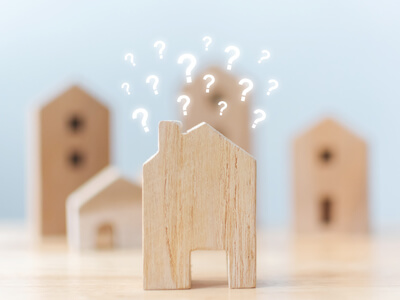Back to News and Blog
Types of Insurance for Your House
Posted May 22, 2020

Your home is a haven for you and your family, and protecting your refuge means investing in insurance. A standard homeowner’s insurance policy covers a lot, but it doesn’t cover everything. It is important to understand the additional types of insurance or extra endorsements available to you and whether or not they apply to your personal circumstances.
Homeowners Policy
Purchasing homeowners insurance is not merely an investment in your house, but an investment in your peace of mind. According to Investopedia writer Osi Momoh, homeowners insurance policies tend to cover “interior damage, exterior damage, loss, or damage of personal assets/belongings, and injury that arises on the property.”
Alex Glenn, insurance writer for NerdWallet, says that the two most common types of homeowners insurance policies are classified as HO-2 and HO-3. He explains that an HO-2 policy is deemed a “named-peril” policy and is less comprehensive. It offers protection for only 16 dangers: smoke, theft, fire or lightning, windstorms and hail, damage from aircraft, vandalism, damage caused by vehicles, freezing of household systems, weight of ice, snow and sleet, explosions, riots, volcanic eruptions, falling objects, damage from artificially generated electric current, overflow or discharge of water, and sudden cracking, bulging, or tearing of home.
“HO-3 plans are “open-peril”, which means they cover all risks except those your insurer excludes. Your personal property, however, is still covered under a named-peril basis,” Glenn writes. “For the broadest protection, there’s the HO-5 home insurance policy, which covers both your dwelling and your personal property for all problems except those specifically excluded.”
Hail, Windstorms, and Tornados
Although most homeowners’ insurance policies provide some coverage for damage resulting from tornados, windstorms, and severe weather like hail, Mila Araujo, writing for The Balance, warns that it might not be enough protection when Mother Nature strikes.
“With changing costs of construction materials and labor, home insurance reconstruction costs have increased over the years,” writes Araujo. “Although some policies do include the option for inflation adjustment, this is not sufficient to cover varying reconstruction costs. Take some time to verify the value your home is insured for. Then, be sure to inquire about what happens in a claim if your home is underinsured.”
Flood
Flooding and flood damage are not typically covered under standard homeowners insurance policies. According to Investopedia.com writer Janet Fowler, you are financially responsible for repairing any damage incurred by issues such as water main breaks, flash flooding, or sewer backups. She suggests that if you live in an area where flooding is prevalent, you should ask your insurance company about additional coverage that might be offered to protect your home and belongings.
Earthquake
Adding an earthquake endorsement to your homeowner’s policy can help protect your investment and cover necessary repairs, according to Janet Hunt, writing for The Balance. Earthquake insurance covers repairs to your home and any non-attached structures, such as a shed or garage. Hunt says that “it can also pay for costs to bring your home up to current building codes and for other incurred expenses such as debris removal.”
Insurance policies are designed to protect what you hold near and dear, but they don’t always protect everything. Evaluate your current plan to determine your current coverage, and speak with an insurance expert to ensure that you get all the coverage you want and need for your home.